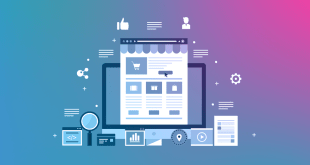In this cutting-edge digital era, web traffic analysis has become an integral part of every successful online venture. Understanding user behavior, identifying patterns, and optimizing web performance are essential for staying ahead in the highly competitive virtual landscape. To achieve this, tech enthusiasts rely on a new breed of web traffic analysis tools powered by artificial intelligence (AI). In this comprehensive blog, we delve into the world of Next-Gen Web Traffic Analysis Tools, exploring how AI-driven insights can revolutionize website optimization and user experience.
The Evolution of Web Traffic Analysis
Web traffic analysis has evolved significantly over the years. Initially, simple visitor counters provided basic insights into website traffic. As the internet expanded, traditional analytics tools like Google Web Analytics emerged, offering more comprehensive data. However, with the advent of AI, a new era of web traffic analysis began, revolutionizing how we gather and interpret data.
Understanding AI-Powered Web Traffic Analysis
AI-powered web traffic analysis tools go beyond conventional analytics by leveraging machine learning algorithms to process vast amounts of data rapidly. These tools can discern patterns, detect anomalies, and provide valuable insights to optimize website performance. Google Analytics, one of the most popular AI-driven tools, stands as a testament to the power of AI in web traffic analysis.
Unveiling the Power of Google Analytics
Google Analytics has emerged as the go-to platform for tech enthusiasts and website owners to glean invaluable data about their online properties. This AI-powered tool offers a plethora of features, including:
- Real-Time Tracking: Monitor website traffic as it happens and respond to emerging trends instantly.
- User Behavior Analysis: Understand user interactions, navigation patterns, and engagement levels.
- Conversion Tracking: Track and analyze the performance of marketing campaigns and conversion rates.
- Customization Options: Tailor reports and data views to suit specific business needs and objectives.
Harnessing AI for Enhanced User Experience
AI-powered web traffic analysis tools not only provide raw data but also offer actionable insights for enhancing user experience. By understanding user behavior, preferences, and pain points, tech enthusiasts can optimize their websites to deliver a seamless and personalized experience.
Overcoming Challenges with AI-Driven Insights
While AI-powered web traffic analysis tools are powerful, they come with their set of challenges. One such concern is data privacy and security. As these tools collect and process user data, it is crucial to adhere to strict data protection policies to ensure user trust and compliance with regulations.
Exploring Advanced AI Algorithms
Beyond conventional AI tools, advanced algorithms like machine learning, natural language processing (NLP), and deep learning are further enhancing web traffic analysis. These technologies enable more accurate predictive analytics and data-driven decision-making.
Google Web Analytics vs. Other AI-Powered Tools
While Google Analytics remains a frontrunner, several other AI-powered web traffic analysis tools are gaining prominence. Some noteworthy alternatives include:
- IBM Watson Analytics: Known for its advanced AI capabilities and natural language querying.
- Adobe Analytics: Offers a comprehensive suite of marketing analytics tools integrated with AI capabilities.
- Kissmetrics: Focused on customer behavior analysis and engagement metrics.
- Crazy Egg: Provides heat maps and click-tracking features for improved user experience.
Common Pitfalls to Avoid in AI-Driven Analysis
Despite the immense potential of AI in web traffic analysis, there are common pitfalls that tech enthusiasts should be aware of:
- Over-Reliance on AI: While AI can provide insights, human analysis and interpretation remain crucial for contextual understanding.
- Ignoring Data Ethics: Respect user privacy and adhere to ethical data practices when implementing AI-driven analytics.
The Future of AI-Powered Web Traffic Analysis
As AI technology continues to advance, the future of web traffic analysis appears promising. Improved AI algorithms, real-time data processing, and enhanced predictive capabilities will empower tech enthusiasts to make data-driven decisions that drive success.
Final Words
In conclusion, Next-Gen Web Traffic Analysis Tools powered by AI are revolutionizing how tech enthusiasts optimize their websites and understand user behavior. Leveraging AI-driven insights from tools like Google Analytics provides a competitive edge and fosters a seamless user experience. However, it is crucial to navigate the challenges ethically and complement AI with human analysis for more effective results.
Commonly Asked Questions
1. How can AI-powered web traffic analysis benefit my website?
AI-powered web traffic analysis offers valuable insights into user behavior, preferences, and engagement patterns. By leveraging AI, you can optimize your website, enhance user experience, and drive better conversions.
2. Are there any privacy concerns with AI-driven analytics?
Yes, data privacy is a significant concern when using AI-powered analytics. It’s crucial to prioritize data ethics and adhere to strict privacy policies to ensure user trust and compliance with regulations.
3. Which AI-powered web traffic analysis tool is best for my business?
Several excellent AI-driven tools are available, such as Google Analytics, IBM Watson Analytics, Adobe Analytics, Kissmetrics, and Crazy Egg. Choose one that aligns with your business objectives and provides the features you need.
4. Can AI replace human analysis in web traffic insights?
While AI is incredibly powerful, it cannot replace human analysis entirely. Human judgment and contextual understanding remain essential in interpreting AI-generated insights.
5. How does AI improve user experience on websites?
AI analyzes user behavior and preferences, enabling you to deliver personalized content and recommendations, leading to a more engaging and satisfactory user experience.
 webfily
webfily



